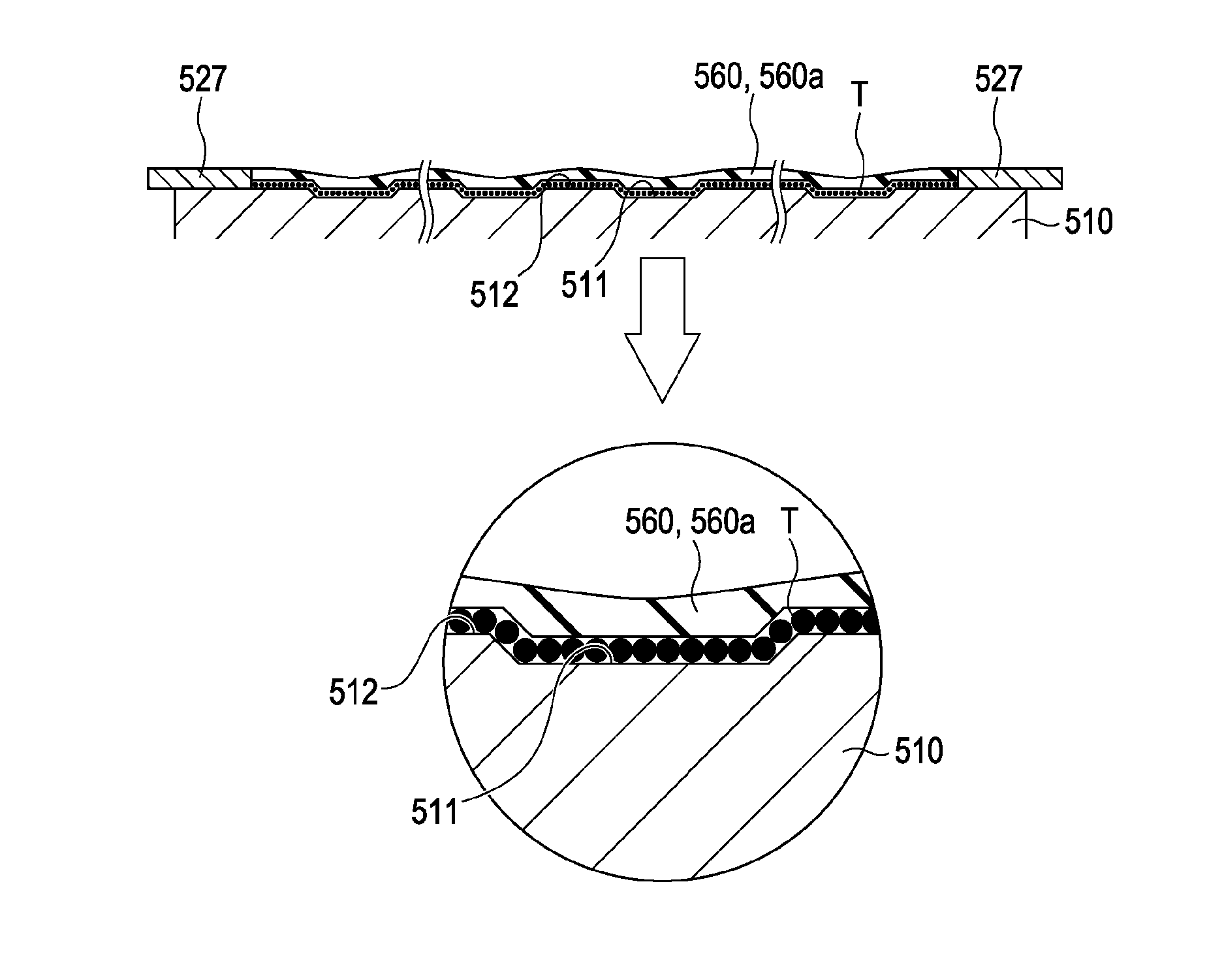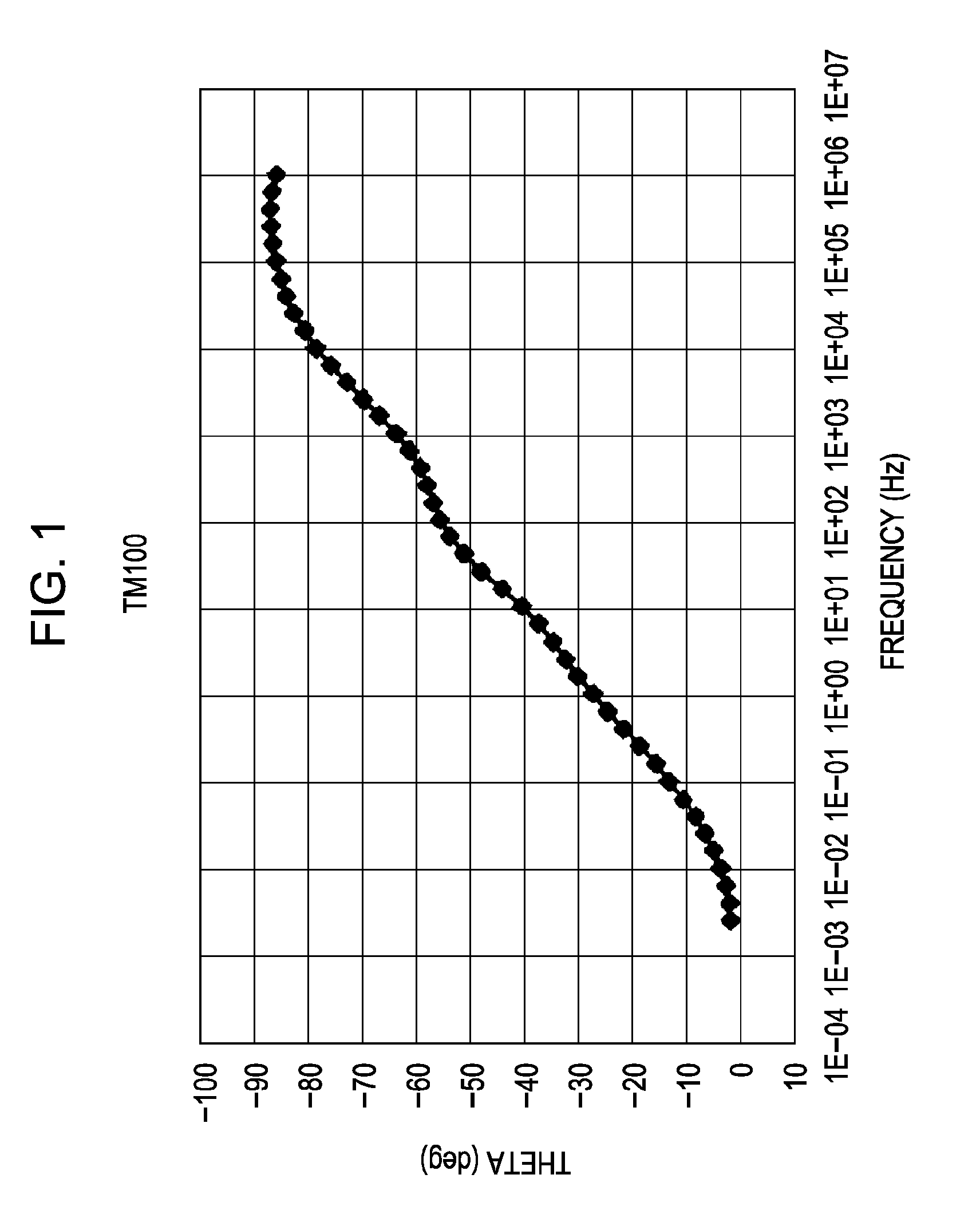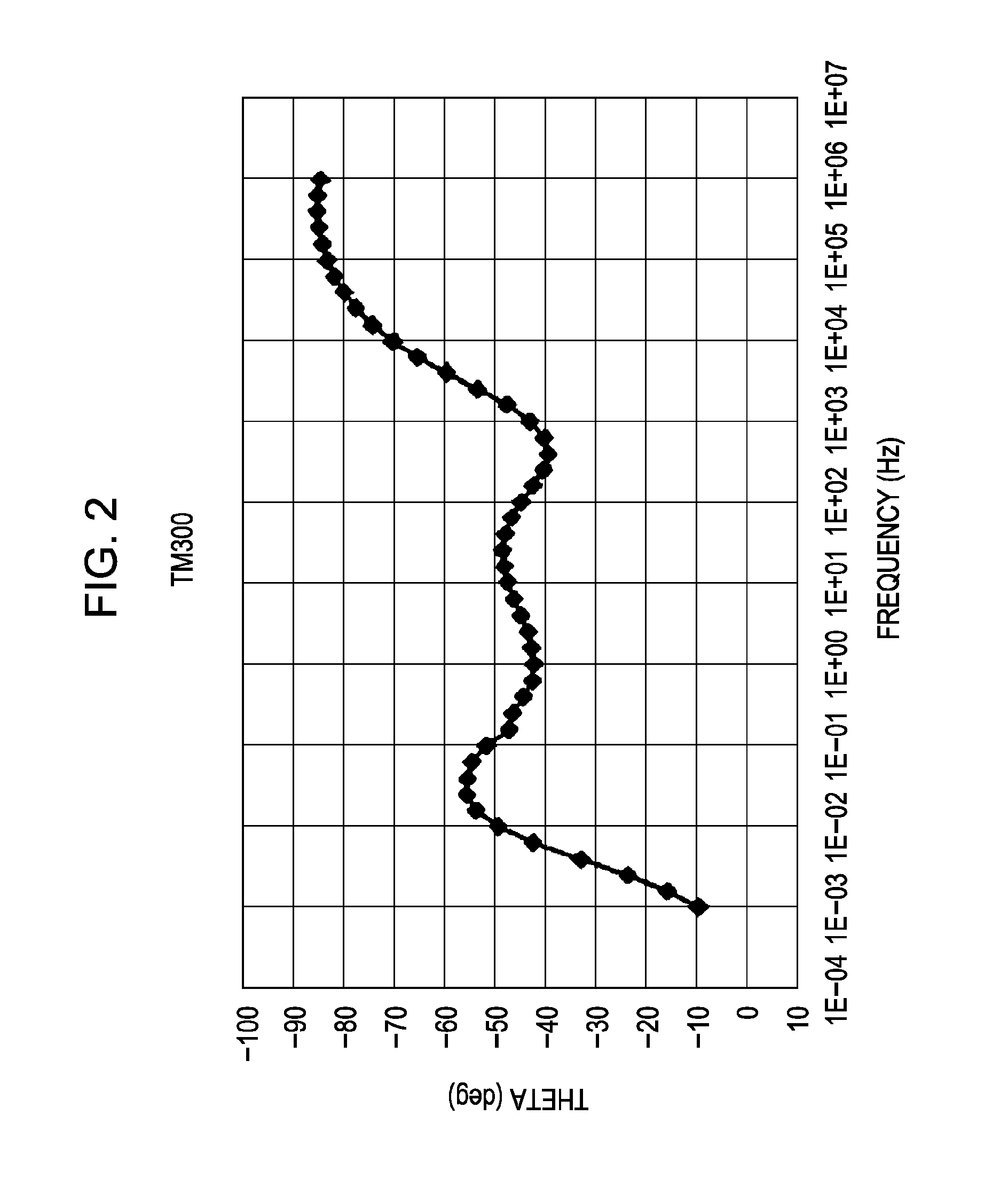Toner, method for forming image, and image forming apparatus
a technology of toner and image, applied in the field of toner, a method for forming an image, and an image forming apparatus, to achieve the effect of less dus
- Summary
- Abstract
- Description
- Claims
- Application Information
AI Technical Summary
Benefits of technology
Problems solved by technology
Method used
Image
Examples
example 1
Preparation of Toner
[0204]After 2 kg of toner base particles obtained by phase inversion emulsification were placed in a Henschel mixer (20 L), 2.0 g of alumina fine particles (TAIMICRON TM-100 (Al2O3) whose main phase is a θ-alumina phase and that has a primary particle size of 14 nm and a BET specific surface area of 132 m2 / g (available from TAIMEI CHEMICALS Co., Ltd.)) were placed in the Henschel mixer as an addition amount per 100 g of toner base particles (the same shall apply hereinafter) to perform processing at a peripheral speed of 40 m / s for 2 minutes.
[0205]Next, 2.0 g of hydrophobic monodispersed spherical large silica particles (KEP10S2 available from NIPPON SHOKUBAI Co., Ltd. having a primary particle size of 100 nm and processed with silicone oil) and 2.0 g of hydrophobic small silica particles (RX200 available from NIPPON AEROSIL Co., Ltd. having a primary particle size of 12 nm and is processed with hexamethyldisilazane (HMDS)) were placed in the Henschel mixer to pe...
example 2
[0207]Toner of Example 2 was prepared in the same manner as in Example 1, except that the alumina fine particles were changed to 0.5 g of TAIMICRON TM-300 (Al2O3) whose main phase is a γ-alumina phase and that has a primary particle size of 7 nm and a BET specific surface area of 225 m2 / g (available from TAIMEI CHEMICALS Co., Ltd.).
example 3
[0208]Toner of Example 3 was prepared in the same manner as in Example 1, except that the alumina fine particles were changed to 2.0 g of Nano•Tek (Al2O3) having a primary particle size of 30 nm and a BET specific surface area of 49.3 m2 / g (available from C. I. Kasei Company, Limited).
PUM
 Login to View More
Login to View More Abstract
Description
Claims
Application Information
 Login to View More
Login to View More - R&D
- Intellectual Property
- Life Sciences
- Materials
- Tech Scout
- Unparalleled Data Quality
- Higher Quality Content
- 60% Fewer Hallucinations
Browse by: Latest US Patents, China's latest patents, Technical Efficacy Thesaurus, Application Domain, Technology Topic, Popular Technical Reports.
© 2025 PatSnap. All rights reserved.Legal|Privacy policy|Modern Slavery Act Transparency Statement|Sitemap|About US| Contact US: help@patsnap.com



